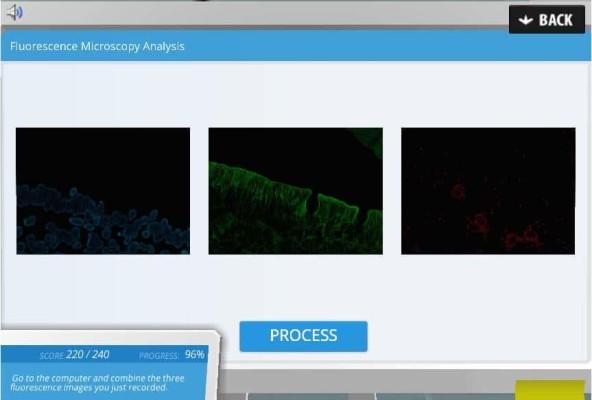
Microscopy is a wondrous and fundamental technique in scientific investigation. When we introduce this basic idea to our students for the first time, we are empowering them to become future researchers who will delve into the intricate details of the microscopic realm.
With advancements in science and technology, microscopy too has come a long way. If we look around us now, there are a variety of improvements in the basic microscopy technique like optical, fluorescence, electron (transmission and scanning), atomic probe, and many more. While all these different versions help scientists in the improved analysis of samples with exceptional resolution and precision, the basics of microscopy remain the same.
To improve that basic understanding of microscopy and help educators pave their way, we have enlisted 5 creative ways here.
Models and simulations are amazing tools to incorporate into your teaching methodologies to improve students’ comprehension of data-heavy topics like microscopy. Using virtual models, you can provide students with a more visually-engaging learning experience of microscopy in case of a lack of infrastructure.
Simulations that mimic the mechanisms and functions of various microscopes can also come in handy as the advanced state-of-the-art facilities might not be available at all teaching institutions. Educators are recommended to try out Labster’s scientifically-designed Microscopy Simulation where your students can play with different types of microscopes, learn their handling and sample preparation procedures and compare them with each other.
Educators can rely on gamed-based learning methods to improve the understanding of microscopy and related terminologies. Research has shown how gamification offers a powerful approach to enhancing students’ engagement in classroom learning. Few of the most integral benefits of including gamified elements while teaching microscopy would be:

Educators can leverage the power of various technological tools to enrich the learning experience while educating students about different types of microscopy. You can create online tutorials and instructional videos that students can replay as many times as they want to learn about different important ideas related to the topic like “the importance of magnification”, “different staining methods”, “differences between confocal and fluorescence microscopy”, etc.
You can also increase their exposure to more advanced microscopy techniques like fluorescence microscopy by using Labster’s Virtual Staining and Imaging Tool. As students engage with virtual staining protocols like using DAPI to stain nuclei, they can learn more about different cellular structures.

Discover Labster's Microscopy virtual lab today!
There is plenty of exciting career prospects that require researchers to be thoroughly skilled with different microscopy techniques. Quoting and highlighting these career opportunities will instill a sense of purpose in your students as your delve deeper into the topic's intricacies.
You can invite such researchers, scientists, entrepreneurs, etc who have established their work and businesses on this magnificent technique. As they discuss how microscopy plays a crucial role in their work, whether it’s in medical diagnostics, materials science, forensics, or pharmaceutical start-up, students can get a firsthand account of how impactful this technique is in a real-world context.
By making students realize the importance of learning this technique to solve real-world issues, you can garner a greater appreciation for the subject. These real-world applications will effectively prove the practical relevance and significance of microscopy in both academic and industrial domains. Some of the notable examples that can be discussed in a classroom setting are:
We understand that teaching topics like microscopy can be challenging due to the lack of infrastructure and appropriate lab facilities. Though modern-day teaching poses several challenges and evolving student needs, these can be addressed through the adoption of new strategies and increased efforts by teachers.
Try our free 30-day All Access Educator's Pass today and teach with the Microscopy simulation alongside 300+ other virtual labs!

Labster helps universities and high schools enhance student success in STEM.
Request DemoRequest a demo to discover how Labster helps high schools and universities enhance student success.
Request Demo